- BETTING TIPS
- BETTING TIPS NAVIGATIONS
 Premier League
Premier League FA Cup
FA Cup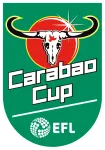 League Cup
League Cup La Liga
La Liga Copa del Rey
Copa del Rey Super Cup
Super Cup Champions League
Champions League Europa League
Europa League Europa Conference League
Europa Conference League World Cup
World Cup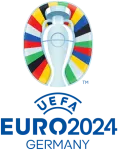 Euro Championship
Euro Championship Nations League
Nations League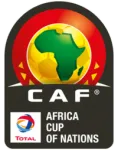 Africa Cup of Nations
Africa Cup of Nations Copa America
Copa America International Friendly
International Friendly Confederations Cup
Confederations Cup Serie A
Serie A Coppa Italia
Coppa Italia Super Cup
Super Cup Bundesliga
Bundesliga Ligue 1
Ligue 1 DFB Pokal
DFB Pokal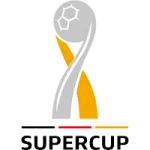 Super Cup
Super Cup Malaysia Super League
Malaysia Super League Coupe de France
Coupe de France Trophée des Champions
Trophée des Champions Pro League
Pro League
- Teams
- TEAMS NAVIGATIONS
 Premier League
Premier League FA Cup
FA Cup League Cup
League Cup La Liga
La Liga Copa del Rey
Copa del Rey Super Cup
Super Cup Champions League
Champions League Europa League
Europa League Europa Conference League
Europa Conference League World Cup
World Cup Euro Championship
Euro Championship Nations League
Nations League Africa Cup of Nations
Africa Cup of Nations Copa America
Copa America International Friendly
International Friendly Confederations Cup
Confederations Cup Serie A
Serie A Coppa Italia
Coppa Italia Super Cup
Super Cup Bundesliga
Bundesliga Ligue 1
Ligue 1 DFB Pokal
DFB Pokal Super Cup
Super Cup Malaysia Super League
Malaysia Super League Coupe de France
Coupe de France Trophée des Champions
Trophée des Champions Pro League
Pro League
- Fixtures & Results
- Fixtures & Results NAVIGATIONS
 Premier League
Premier League FA Cup
FA Cup League Cup
League Cup La Liga
La Liga Copa del Rey
Copa del Rey Super Cup
Super Cup Champions League
Champions League Europa League
Europa League Europa Conference League
Europa Conference League World Cup
World Cup Euro Championship
Euro Championship Nations League
Nations League Africa Cup of Nations
Africa Cup of Nations Copa America
Copa America International Friendly
International Friendly Confederations Cup
Confederations Cup Serie A
Serie A Coppa Italia
Coppa Italia Super Cup
Super Cup Bundesliga
Bundesliga Ligue 1
Ligue 1 DFB Pokal
DFB Pokal Super Cup
Super Cup Malaysia Super League
Malaysia Super League Coupe de France
Coupe de France Trophée des Champions
Trophée des Champions Pro League
Pro League
- Tables
- Tables NAVIGATIONS
 Premier League
Premier League FA Cup
FA Cup League Cup
League Cup La Liga
La Liga Copa del Rey
Copa del Rey Super Cup
Super Cup Champions League
Champions League Europa League
Europa League Europa Conference League
Europa Conference League World Cup
World Cup Euro Championship
Euro Championship Nations League
Nations League Africa Cup of Nations
Africa Cup of Nations Copa America
Copa America International Friendly
International Friendly Confederations Cup
Confederations Cup Serie A
Serie A Coppa Italia
Coppa Italia Super Cup
Super Cup Bundesliga
Bundesliga Ligue 1
Ligue 1 DFB Pokal
DFB Pokal Super Cup
Super Cup Malaysia Super League
Malaysia Super League Coupe de France
Coupe de France Trophée des Champions
Trophée des Champions Pro League
Pro League
- News
- News NAVIGATIONS
 Premier League
Premier League FA Cup
FA Cup League Cup
League Cup La Liga
La Liga Copa del Rey
Copa del Rey Super Cup
Super Cup Champions League
Champions League Europa League
Europa League Europa Conference League
Europa Conference League World Cup
World Cup Euro Championship
Euro Championship Nations League
Nations League Africa Cup of Nations
Africa Cup of Nations Copa America
Copa America International Friendly
International Friendly Confederations Cup
Confederations Cup Serie A
Serie A Coppa Italia
Coppa Italia Super Cup
Super Cup Bundesliga
Bundesliga Ligue 1
Ligue 1 DFB Pokal
DFB Pokal Super Cup
Super Cup Malaysia Super League
Malaysia Super League Coupe de France
Coupe de France Trophée des Champions
Trophée des Champions Pro League
Pro League
- Live ScoresLive
Espanyol
SpainVenue
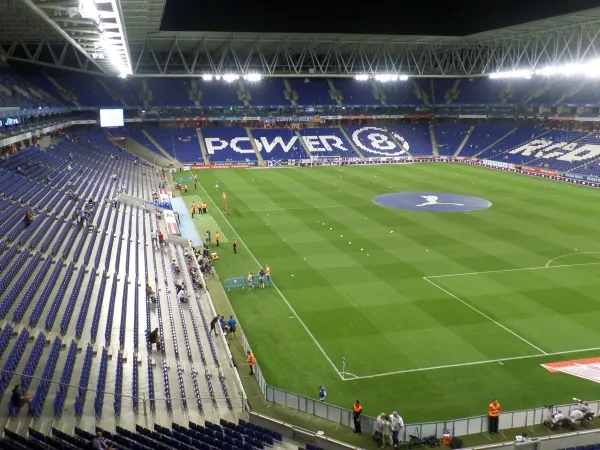
Stage Front Stadium
| City | : | Cornella de Llobregat |
| Capacity | : | 40,423 |
| Surface | : | Grass |
RCD Espanyol, officially known as Real Club Deportivo Espanyol, is one of Spain's oldest and most cherished football clubs, founded in 1900 in the city of Barcelona. Over the years, Espanyol has developed a strong identity, both on and off the pitch, and its fanbase remains deeply loyal despite the challenges it has faced. With a rich history that includes periods of great success as well as challenges, Espanyol is a club that embodies the spirit of resilience, tradition, and a love for the beautiful game.
Though the club is often overshadowed by its more famous Barcelona counterparts, Espanyol has consistently proven itself as a formidable force in Spanish football. This article will explore the history of Espanyol, the key moments and achievements that have shaped the club, the players and managers who have contributed to its legacy, and the club's aspirations moving forward.
The Origins of Espanyol – A Historic Beginning
The journey of Espanyol began in 1900 when a group of students from the Escola Superior de Comerç in Barcelona formed the club. Originally founded as Club Español de Futbol, the team initially competed in regional Catalan leagues. Espanyol's identity was firmly rooted in the local community of Barcelona, which was dominated by FC Barcelona at the time. The club’s early days saw it fight for recognition, striving to establish itself as one of Spain's top teams.
Match Predictions
- Villarreal vs. Getafe Predictions & Betting Tips on Dec 06 - 21:00 PM
- Alaves vs. Real Sociedad Predictions & Betting Tips on Dec 06 - 23:15 PM
- Real Betis vs. Barcelona Predictions & Betting Tips on Dec 07 - 01:30 AM
- Athletic Club vs. Atletico Madrid Predictions & Betting Tips on Dec 07 - 04:00 AM
- Elche vs. Girona Predictions & Betting Tips on Dec 07 - 21:00 PM
Espanyol’s first major breakthrough came in 1909 when they won their first Copa del Rey (King's Cup), a major domestic trophy in Spain. This victory, along with their subsequent performances, began to cement Espanyol's place in the Spanish football landscape. The club’s early success set the stage for more triumphs and struggles in the decades that followed.
Growth and Evolution – The Early 20th Century
Espanyol continued to grow throughout the 1910s and 1920s, both in terms of recognition and skill level. The club became increasingly competitive in Spain’s footballing landscape, attracting top players and coaches to help it rise through the ranks. Espanyol's rise coincided with the development of La Liga as the country’s top football division.
One of the club’s pivotal moments in this period was the move to a new stadium. In 1923, Espanyol began playing in Sarrià Stadium, which became an iconic venue in Spanish football. The stadium served as Espanyol’s home for the majority of the 20th century and was a symbol of the club’s growth and commitment to the local community.
Despite facing challenges, including financial difficulties and strong competition from FC Barcelona, Espanyol began to establish itself as a respected club. The club’s identity was built around strong defensive tactics, teamwork, and a passionate fanbase that stood behind the club through thick and thin.
Golden Years – The Mid-20th Century
Espanyol experienced a period of sustained success in the 1940s and 1950s. The club managed to secure several important domestic trophies and achieved consistency in La Liga. Espanyol’s squad boasted some of the best players in Spanish football, and the team’s attacking style of play began to catch the eye of both domestic and international observers.
One of the most notable achievements during this time was Espanyol’s second Copa del Rey victory in 1940. Espanyol continued to be competitive in the years following, although FC Barcelona remained the dominant force in Catalan football. Despite being overshadowed by their local rivals, Espanyol developed a deep identity that was rooted in local pride and hard work.
Sarrià Stadium – The Heart of Espanyol
Sarrià Stadium, which served as Espanyol’s home for nearly 75 years, was a vital part of the club's history. From 1923 until its closure in 1997, Sarrià witnessed countless memorable moments, including domestic and European campaigns. The stadium was deeply loved by Espanyol supporters, who packed the stands week after week to show their unwavering support for the team.
Sarrià became synonymous with Espanyol’s success in the 1980s and early 1990s, when the team was consistently one of Spain’s top clubs. The stadium was also the site of a number of intense Catalan derbies, where Espanyol faced FC Barcelona in high-stakes encounters. These matches were often fiercely contested, with both sets of fans showing their passion for the game.
Despite its deep historical significance, Sarrià Stadium was eventually replaced by the new RCDE Stadium (Estadio Cornellà-El Prat) in 2009. While the new stadium offers more modern facilities, it’s clear that Sarrià will always hold a special place in the hearts of Espanyol fans.
Challenges and Rebuilding – The Late 20th Century
The 1970s and 1980s were challenging periods for Espanyol, as the club faced financial difficulties, fluctuating performances, and a lack of sustained success. This period was characterized by a number of managerial changes and an inability to maintain a consistent squad. Despite this, Espanyol continued to compete in La Liga, and the team had some notable performances, including a top-five finish in the league.
Espanyol’s most notable moment in the late 20th century came in the 1996-97 season, when the club reached the UEFA Cup final. Although Espanyol was ultimately defeated by Schalke 04, this run to the final was a testament to the resilience and quality of the team. This European adventure was the beginning of a new era for Espanyol, and the club began to refocus on building a sustainable future.
The RCDE Stadium Era – A New Beginning
In 2009, Espanyol moved to their current home, the RCDE Stadium, located in the district of Cornellà de Llobregat in Barcelona. The move marked a fresh start for the club, as the modern stadium provided better facilities for both players and fans. The RCDE Stadium has become the symbol of a new chapter in Espanyol’s history, filled with hope and ambition for future success.
Espanyol’s time in the RCDE Stadium has seen mixed fortunes. On the one hand, the club has enjoyed some memorable moments, including reaching the Copa del Rey final in 2006 and qualifying for European competitions on several occasions. On the other hand, Espanyol has faced relegation battles, particularly in the early 2010s. The club has worked tirelessly to stabilize its financial position and build a competitive team that can challenge for higher positions in La Liga.
Iconic Players and Managers
Espanyol has been home to many legendary players throughout its history, including several who made a significant impact on both the domestic and international stages.
Iago Aspas
One of Espanyol’s most celebrated players in recent years, Iago Aspas played for the club between 2009 and 2012. Aspas made his name with his incredible skill and goal-scoring ability, quickly becoming a fan favorite. While his time at Espanyol was relatively brief, Aspas left an indelible mark on the club before moving on to play for Celta Vigo, where he achieved even greater success.
Raúl Tamudo
Another iconic figure in Espanyol’s history is Raúl Tamudo, the club’s all-time top scorer. Tamudo’s time at Espanyol spanned over a decade, and his goals helped the club achieve success in both domestic and European competitions. His commitment to the club made him a fan favorite, and he remains one of the most beloved players in Espanyol’s history.
Managers
Over the years, Espanyol has been led by various notable managers, including Javier Aguirre and Quique Sánchez Flores. Both of these managers played crucial roles in stabilizing the team and bringing the club back to competitiveness in La Liga after relegation battles. Their leadership and tactical expertise helped Espanyol navigate tough seasons and provided the foundation for future success.
Espanyol’s Aspirations for the Future
Espanyol’s current ambitions are focused on solidifying their position in La Liga, securing consistent top-half finishes, and aiming for a return to European competition. The club’s management is committed to investing in young talent, improving the squad, and developing the club’s infrastructure to ensure long-term success.
The club has also been focusing on building a strong connection with its fans and the local community, fostering a sense of unity and pride that has always been integral to Espanyol’s identity.
Conclusion: The Heart and Soul of Espanyol
Espanyol’s journey through Spanish football has been marked by passion, perseverance, and an unwavering commitment to the game. From its early days in Barcelona to its present-day aspirations, Espanyol has earned a place in the hearts of millions of football fans, especially those in Catalonia. With a rich history, passionate supporters, and a commitment to success, Espanyol will continue to strive for greatness in Spanish and European football.
Looking forward, the future of RCD Espanyol appears bright. The club’s foundations are strong, and its commitment to youth development, financial stability, and competitive performance ensures that Espanyol will remain an important force in Spanish football for years to come.
News & Updates


